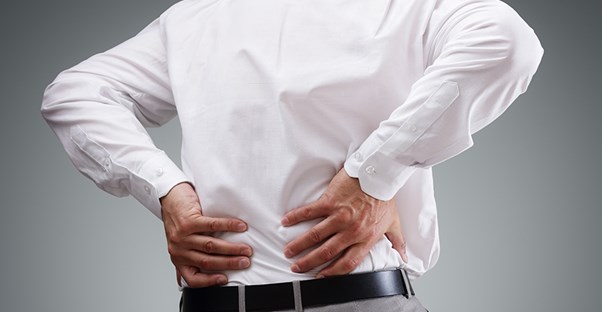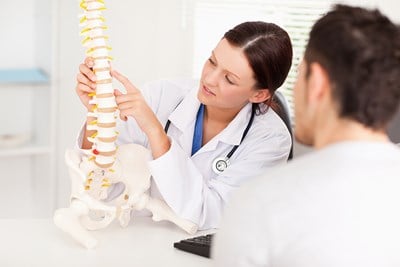Spinal stenosis is the narrowing of the bone corridor that surrounds the spinal cord. The areas that normally allow plenty of room for spinal nerves to pass through become smaller, adding pressure to those nerves. While not everyone may feel the symptoms of this disorder, others may experience radiating pain, numbness, weak muscles, and even issues with the bladder. Here is a look at the causes and risk factors of spinal stenosis.
Spinal Stenosis Causes
There are many causes of spinal stenosis. When the condition occurs in the neck, it’s considered cervical stenosis, while it's known as lumbar stenosis in the lower back. The center of the back may develop thoracic stenosis, although this is much less common than cervical or lumbar. While any of these types of stenosis may occur as a congenital birth defect, a variety of other factors can actually induce spinal stenosis. These include:
- Spinal Growths: Bone spurs, or osteophytes, may cause spinal stenosis. Diseases such as osteoarthritis and Paget’s disease can inadvertently encourage bone spurs along the spinal column. These outgrowths then push into the space reserved for the spinal column, leading to stenosis. Conversely, tumors can form in several places in and around the spinal column that may put pressure on the area and take up space reserved for spinal nerves.
- Spinal Aging: Between each vertebrae lies a disk intended to absorb the impact of shocks to prevent unnecessary wear and tear on the vertebrae. As you get older, those disks begin to dry and crack. The absorbent material within can then leak out, causing a herniated disk, pushing against the spinal nerves. Additionally, the connective ligaments intended to keep the spinal column attached and in line can become thicker and tougher than they should be. The thicker they get, the more they begin to push into the spinal cord, also causing spinal stenosis.
- Accidental Injuries: Any sort of accident that causes extreme trauma to the spine may result in spinal stenosis. If a vertebrae gets cracked or dislocated, additional pressure is put on the segment of spinal cord running through that particular area. Furthermore, if the spinal column cracks, pieces of bone may not only wound the spine, but also the parts inside of it. The swelling of nearby tissue may also put extra pressure on the spinal cord.
Spinal Stenosis Risk Factors
It can be difficult to practice prevention against spinal stenosis, but it is still important to be aware of risk factors. As you grow older, you will be more likely to develop spinal stenosis because of aging ligaments and cushioning disks. Having osteoarthritis or rheumatoid arthritis will also increase the chances of developing spinal stenosis. If you’ve been in any sort of traumatic accident affecting the spine but have not yet developed spinal stenosis, it's still important to pay attention to the way your back and other nerves behave, as a faster diagnosis often leads to more successful treatment.




